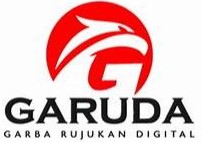Redesign of Cover Lower Dies on Compaction Tool in Sealface Manufacturing Based on Powder Metallurgy Process
DOI: https://doi.org/10.25077/metal.8.1.25-38.2024
Author(s)
Riona Ihsan Media (Politeknik Manufaktur Bandung)Otto Purnawarman (Politeknik Manufaktur Bandung)
Hanif Azis Budiarto (Politeknik Manufaktur Bandung)
Daffa Caesario (Politeknik Manufaktur Bandung)
Abstract
Keywords
Full Text:
PDFReferences
Strategic Market Research, “Powder Metallurgy Market By Type (Ferrous and Non-ferrous), By Material (Titanium, Steel, Nickel, Aluminium), By Manufacturing Process (Additive Manufacturing, Metal injection molding and Power metal hot isostatic pressing), By Application (Automotive, Industrial Machinery, Electrical and Electronics and Aerospace), By Geography, Size, Share, Segment Revenue Estimation, Forecast, 2021-2030,” www.strategicmarketresearch.com. Accessed: Jan. 28, 2024. [Online]. Available: https://www.strategicmarketresearch.com/market-report/powder-metallurgy-market
W. J. Sames, F. A. List, S. Pannala, R. R. Dehoff, and S. S. Babu, “The metallurgy and processing science of metal additive manufacturing,” International Materials Reviews, vol. 61, no. 5, pp. 315–360, Jul. 2016, doi: 10.1080/09506608.2015.1116649.
R. Yin, Metallurgical Process Engineering. Berlin, Heidelberg: Springer Berlin Heidelberg, 2011. doi: 10.1007/978-3-642-13956-7.
A. Panda and J. Dobránsky, “ADVANTAGES AND EFFECTIVENESS OF THE POWDER METALLURGY IN MANUFACTURING TECHNOLOGIES,” 2018.
A. Hamweendo, T. Malama, and I. Botef, Titanium-Nickel Alloys for Bone Tissue Engineering Application via Cold Spray. 2016.
J. O. Ojile, J. A. Teixeira, and C. Carmody, “Mechanical Seal Failure Analysis,” Tribology Transactions, vol. 53, no. 4, pp. 630–635, Jul. 2010, doi: 10.1080/10402001003646420.
Pahl/Beitz, Pahl/Beitz Konstruktionslehre. Berlin, Heidelberg: Springer Berlin Heidelberg, 2021. doi: 10.1007/978-3-662-57303-7.
 Article Metrics
Article Metrics
This article has been read : 89 timesPDF file viewed/downloaded : 14 times
Copyright (c) 2024 Riona Ihsan Media, Hanif Azis Budiarto, Otto Purnawarman
View METAL's Stats

This work is licensed under a Creative Commons Attribution-NonCommercial-ShareAlike 4.0 International License.







